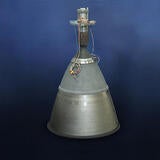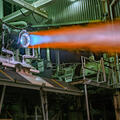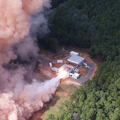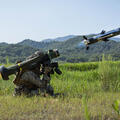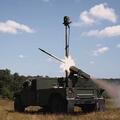August 20, 2025, marks 50 years since the launch of NASA’s trailblazing Viking 1 mission, which less than a year later gave the world its first up-close-and-personal look at the surface of another planet.
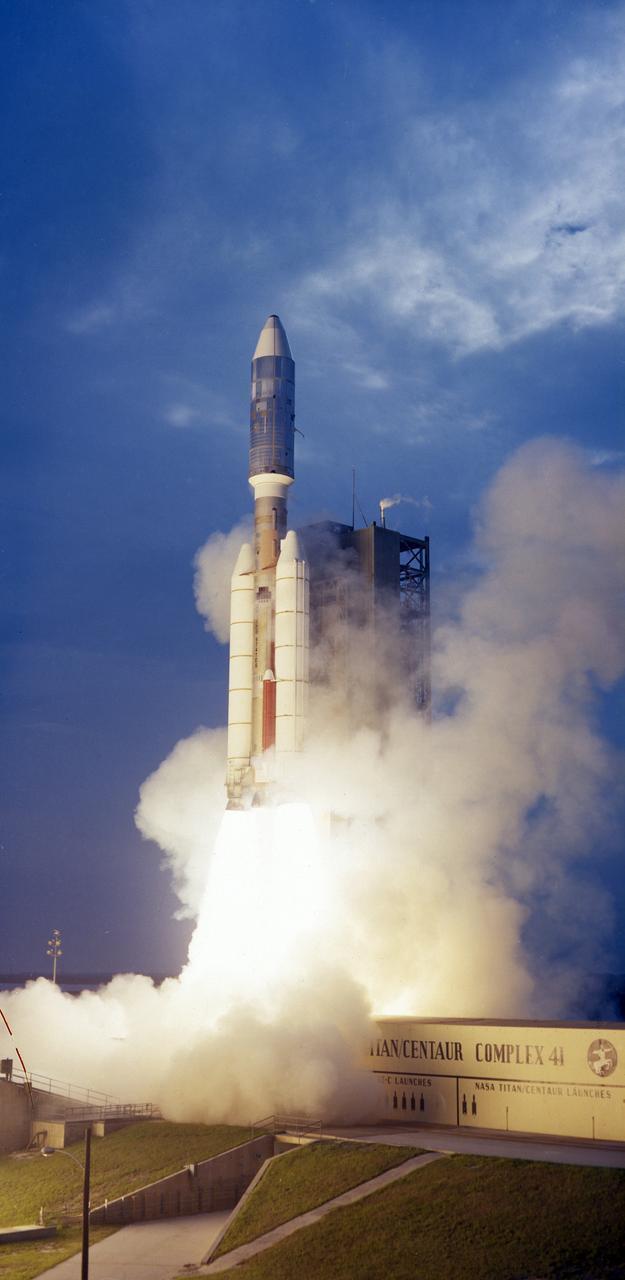
The Titan III-Centaur carrying the Viking 1 Lander lifted off on August 20, 1975. Photo Credit: NASA.
Coming on the heels of Apollo, the Viking launches and landings – with Viking 2 following just weeks after its identical twin – stand out as one of NASA’s signature achievements. In addition to laying the scientific foundation for future Mars exploration, the program produced technology that remains relevant today.
Take, for example, the MR-80 engine developed by L3Harris Technologies and its heritage companies that eased the Viking landers to the Martian surface in 1976. The design worked so well that NASA resurrected it three decades later for its SUV-sized Curiosity and Perseverance rovers, which are still operating on the red planet.
The configuration and landing schemes were different: The Viking landing engines featured 18 nozzles rather than a single-nozzle version used for the rovers, which were lowered by cable from a Sky Crane hovering above the Martian surface. But the main thrust chamber of the engines that enabled the Curiosity and Perseverance to descend, hover and then fly away once the rovers had safely touched down were modernized versions of Viking hardware.
The MR-80 is one of many propulsion systems provided by L3Harris and its legacy companies that helped Viking earn its place in the space exploration history books.
“Space exploration technology has come a long way since the 1970s, but the MR-80 had the combination of thrust and throttling capability that made it a perfect fit for the rover missions,” said Katrina Kilborn, In-Space Propulsion General Manager, Aerojet Rocketdyne, L3Harris. “By building on the successes of the Viking program, we continue to push the boundaries of what is possible, paving the way for future missions that will further unlock the mysteries of Mars and beyond.”
Both Viking 1 and 2 missions began with launches aboard Titan IIIE-Centaur rockets whose three stages were powered by L3Harris legacy engines. The Centaur upper stage that gave each probe its final boost out of Earth orbit and on its way to Mars was powered by twin RL10 engines, variants of which are still in use today on United Launch Alliance’s Atlas V and Vulcan rockets, as well as NASA’s Space Launch System rocket.
During the voyage to Mars, each probe relied on a single L3Harris RS2101C engine generating 300 pounds of thrust for course corrections. Upon arrival, the engine fired for 38 seconds to enable capture into Mars orbit and conducted subsequent firings for orbit refinement.
The next step was separation of the landers from their companion orbiters, which went on to map the planet’s surface and serve as communications relays. Following separation, 12 L3Harris MR-50F engines, generating 8.5 pounds of thrust and arranged in groups of three on four quadrants of each lander’s protective aeroshell, fired to deorbit the craft and keep it stable for its descent to the surface.
After jettisoning the aeroshell, each lander was slowed by parachute prior to activation of its Terminal Descent System powered by three 638-pound-thrust MR-80 engines and four additional MR-50F engines. The smaller thrusters also provided roll control during landing.
The MR-80 engines were configured with 18 small nozzles to spread their exhaust over a wide angle. This limited the potential for contamination by surface dust kicked up by the landers’ exhaust plumes.
“The Viking landings are an example of NASA’s can-do spirit that continues to this day with missions like the Curiosity and Perseverance rovers and of course Artemis, which will return astronauts to the lunar surface in the coming years,” said Kilborn. “We celebrate this momentous occasion by honoring our past achievements and eagerly anticipating the future.”





